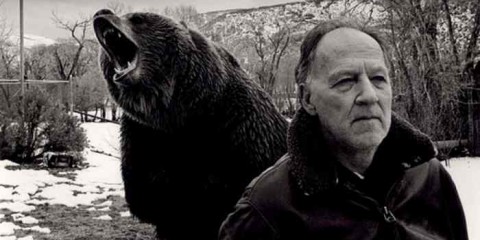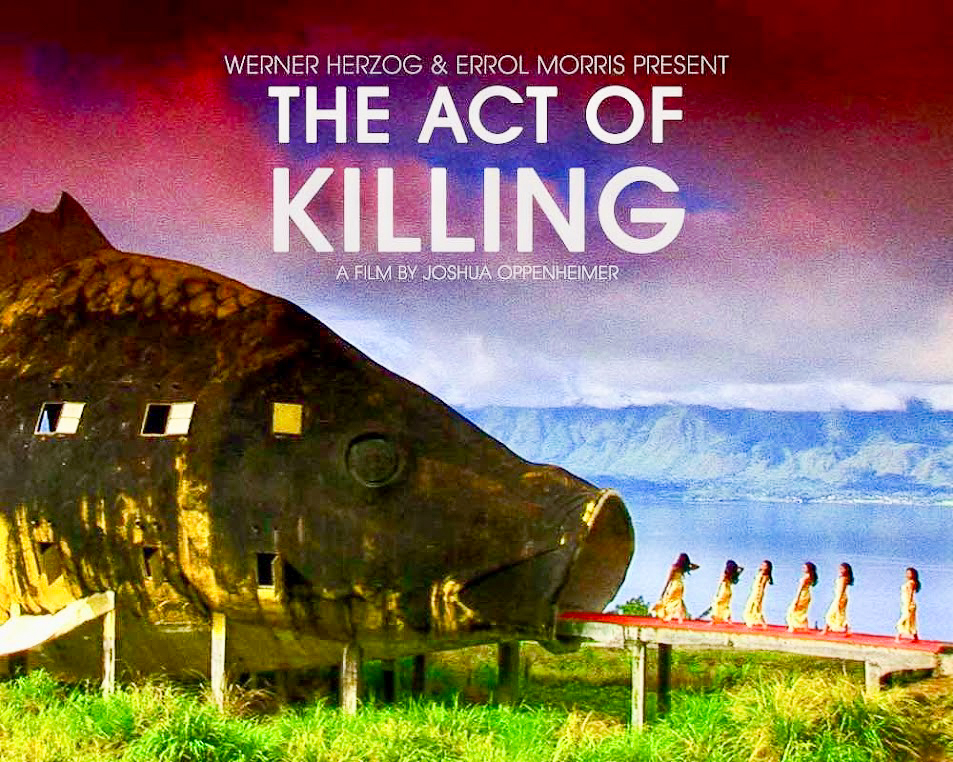NOTES FROM UNDERGROUND
Hope
Links
- Get link
- X
- Other Apps
FILM DIRECTORS - WERNER HERZOG
At age 14, he began a short period of intense Catholic devotion, around the same time that he discovered the virtues of traveling on foot and became determined to make films . As a teenager, Herzog learned about film making from an encyclopaedia entry on the subject, but because of his youth and lack of formal training, he was unable to find producers for his early screenplays.
Consequently, he founded Werner Herzog Filmproduktion and began producing his own films . He has written, produced, directed and often narrated virtually all of his own films since then, becoming an auteur in the proper sense.
-
According to IMDb, Werner Herzog has 71 directorial credits to his name with an additional three films currently in the pipeline
According to IMDb, Werner Herzog has 71 directorial credits to his name with an additional three films currently in the pipeline
Aguirre, der Zorn Gottes (Aguirre, the Wrath of God, 1972) was his first international success and the first of five collaborations with actor Klaus Kinski. Very loosely based upon Spanish conquistador Lope de Aguirre’s doomed expedition to find El Dorado, the film (perhaps Herzog’s best) details one man’s descent into madness as he rebels against the Spanish crown and nature alike. Aguirre is a quintessentially Herzogian (anti-)hero, encompassing both the “over-reacher and prophet or underachiever and holy fool”, put in bizarre locations and situations “often in order to let a strange and touching humanity emerge from impossible odds” .
His next feature, Jeder für sich und Gott gegen alle (The Enigma of Kaspar Hauser), 1974 – its German title means, appropriately enough, “Every Man For Himself and God Against All”) would bring Herzog’s interest in language to the fore again, this time based on the true story of a young man who was imprisoned for his first 16 years and then turned loose into an early 19th century German city without any conception of civilisation. Unable to speak more than a few pre-rehearsed sentences, Kaspar is able to see the world with completely fresh eyes (much like the aliens in the original concept for Fata Morgana) and must quickly learn to communicate with his surroundings.
"The Enigma of Kaspar Hauser" is a lyrical film about the least lyrical of men. Bruno S. has the solidity of the horses and cows he is often among, and as he confronts the world I was reminded of W. G. Sebold's remark that men and animals regard each other across a gulf of mutual incomprehension. The film's landscapes, its details from nature, its music, all embody the dream world Kaspar entered when he escaped the unchanging reality of his cellar. He never dreamed in the cellar, he explains. I think it was because he knew of nothing else than the cellar to dream about.
MORE ABOUT FILM

Herzog’s films often focus upon faith, whether a faith in one’s own ambitions, a Romantic faith in the shadow of all-powerful nature, or a faith in religious or superstitious idea(l)s seemingly at odds with society or conventional reason.
MORE ABOUT FILM
These forms of faith would converge in Fitzcarraldo (1982), one of Herzog’s finest and most well known films., as much the product of his faith in filmmaking as in the power of the cinematic image. Described by Herzog as his best “documentary”, it is a fictional feature that details a wealthy industrialist’s obsessive quest to bring European opera to the Amazon. To finance his dream of building a new opera house, this “Conquistador of the Useless” travels upriver and, with the help of local indigenous peoples, literally pulls a huge steamboat over a mountainside to access a fertile tributary. After the boat reaches the other side of the mountain, the natives cut it loose, sending it into violent rapids to appease the spirits residing there. Fitzcarraldo ultimately fails in his mission, but limps back to port with a compromised version of his dream – a dream that money alone cannot buy – still intact. A chaotic four years in the making, the film’s completion was as much a Sisyphean task as Fitzcarraldo’s own quest to elevate his dreams over reality – especially because Herzog used no miniatures or special effects in order to pull the full-sized steamboat up and over the mountain, determined to give the film a wholly natural sense of wonder and physical magic . Despite many wild controversies surrounding the film’s making, it earned Herzog a Best Director award at the 1982 Cannes Film Festival.
"Fitzcarraldo" (1982) is one of those brave and epic films, like "Apocalypse Now" or "2001," where we are always aware both of the film, and of the making of the film. Herzog could have used special effects for his scenes of the 360-ton boat being hauled up a muddy 40-degree slope in the jungle, but he believed we could tell the difference: "This is not a plastic boat." Watching the film, watching Fitzcarraldo (Klaus Kinski) raving in the jungle in his white suit and floppy panama hat, watching Indians operating a block-and-tackle system to drag the boat out of the muck, we're struck by the fact that this is actually happening, that this huge boat is inching its way onto land -- as Fitzcarraldo (who got his name because the locals could not pronounce "Fitzgerald") serenades the jungle with his scratchy old Caruso recordings.
Fitzcarraldo (Werner Herzog, 1982): Waking Dreams and Casting Spells in the Jungle >>>
So speaks Timothy Treadwell, balanced somewhere between the grandiose and the manic, in Werner Herzog's "Grizzly Man."He is talking about the wild bears he came to know and love during 13 summers spent living among them in Alaska's Katmai National Park and Reserve. In the early autumn of 2003, one of the bears took him out, decapitated him, chopped him up into bits and pieces, and he was dead. The bear also killed his girlfriend.
The paradox of this film is that it is both unremittingly bleak and rigorously humane. Mr. Herzog, interviewing killers, survivors, witnesses and officials in law enforcement and corrections, is polite even when asking uncomfortable questions, and the seriousness of his intentions allows humor and absurdity to bubble up amid all the pain. He never appears on camera, but his unmistakable voice — dry, precise, carrying the accent of his native Bavaria — ties together this tapestry of conflicting testimony, inchoate emotion and unredeemed ugliness.
Herzog says that's a lie. Kinski describes Herzog in the book as a "nasty, sadistic, treacherous, cowardly creep." Herzog says in the film that Kinski knew his autobiography would not sell unless he said shocking things--so Herzog helped him look up vile words he could use in describing the director.
“Nomad: In the Footsteps of Bruce Chatwin,” is one of the most deeply personal films of his long and brilliant career, I am not just indulging in a bit of critical hyperbole. Even though the film is ostensibly a tribute to a late friend, it almost off-handedly gives us a greater idea of what it is that makes someone like Herzog tick and drives him to the lengths that he has gone time and again throughout his career. Even if he one day set out to make an overt cinematic self-portrait of his life and work, it is hard to believe that it could be as penetrating and insightful as this film.
Chatwin was a British travel writer, journalist, and novelist who had a particular fascination with the theme of human restlessness. He believed that mankind was hardwired to be a migratory species and all of the troubles began when it abandoned that notion in order to begin settling down. He traveled the world, at a time when it was still possible to go to places that hadn’t been overrun with tourists, and wrote vividly about in such acclaimed books as In Patagonia (1977) and The Songlines (1987). It was during his time in the Australian Outback writing the latter title that he first met Herzog in 1983 and realized that they were kindred spirits whose journeys had taken them to a number of the same places, albeit at different times. This began a friendship that would last until Chatwin’s death in 1989 and included Herzog adapting Chawin’s The Viceroy of Ouidah into the hallucinatory 1987 adventure “Cobra Verde.” As a tribute to his friend, "Nomad" finds Herzog journeying to a number of the places that he and Chatwin encountered in the past in order to look at them anew and reflect on how the nomadic spirit that drove Chatwin and continues to drive him has largely become a thing of the past.
https://www.rogerebert.com/reviews/nomad-in-the-footsteps-of-bruce-chatwin-2020

.jpg)























.jpg)